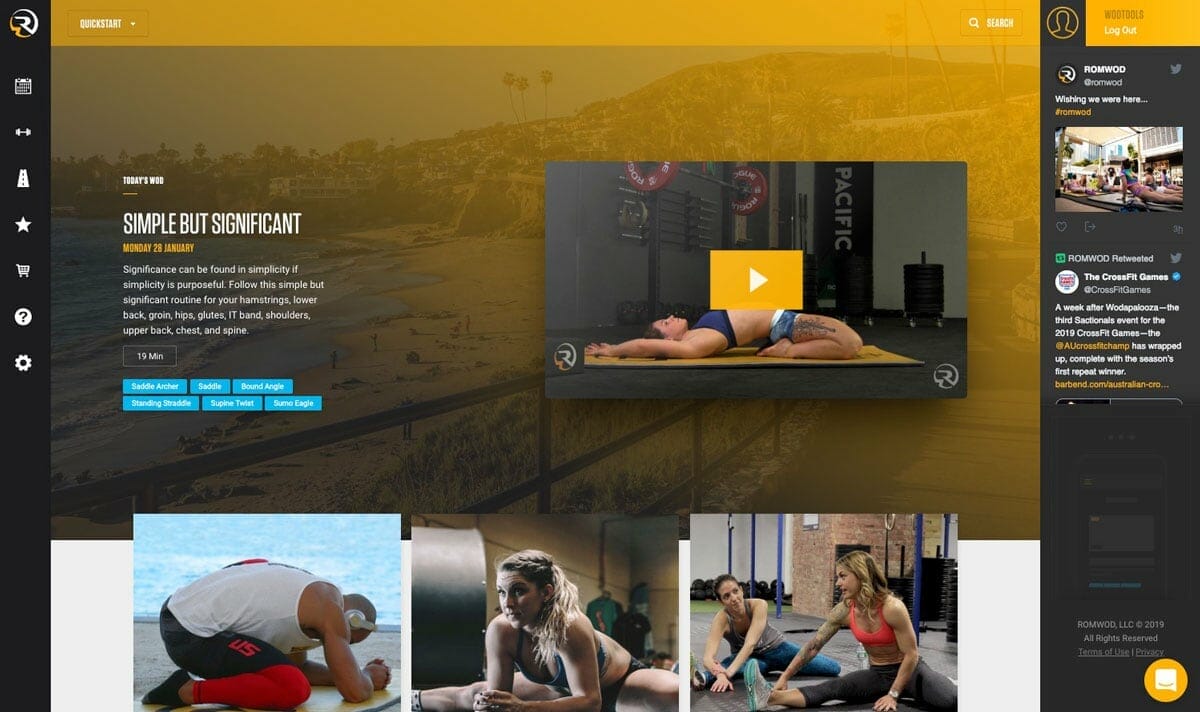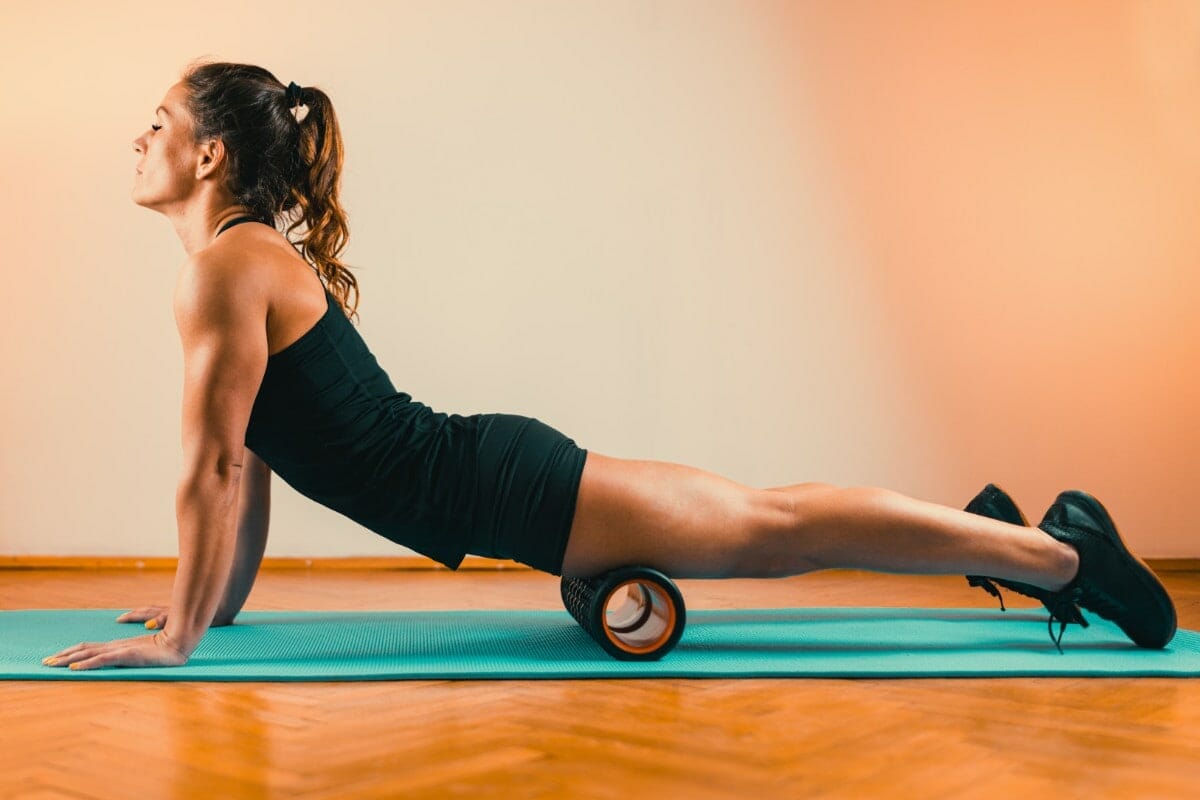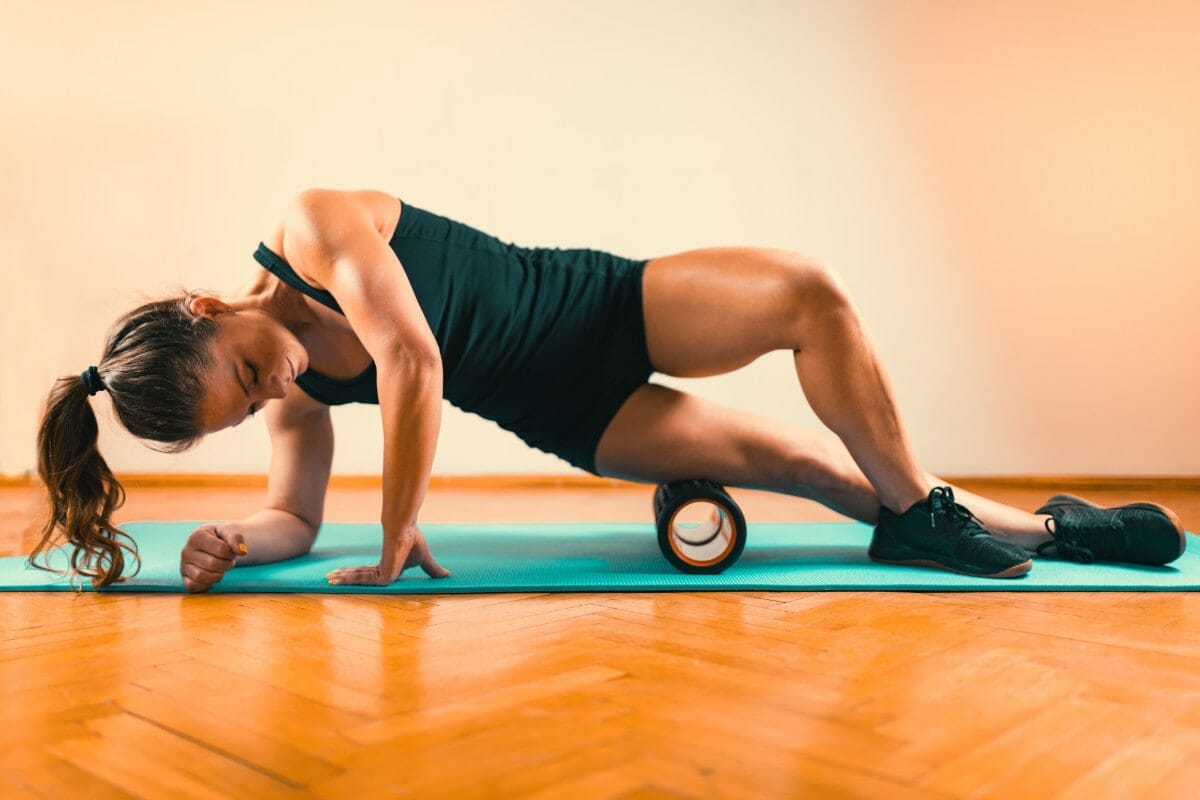Be honest, when was the last time you worked on your mobility? I’m not talking about a few stretches during the warm-up. I mean a session solely dedicated to mobility. I’m guessing it was a while ago. When it comes to mobility training most CrossFit athletes run for the hills. We all want to get stronger and fitter, and think lifting heavy and performing fancy-looking MetCons is going to get us there. That is true. But, there are also other things we can be doing to improve our fitness, one of those things being mobility.
Mobility is one of the most overlooked parts of training. Granted, it is pretty boring, but having great mobility works wonders for both our performance and health. According to Kelly Starrett, of The Ready State, 98% of movement-related injuries can be prevented and treated by improving movement mechanics and mobility. If there’s ever a reason to get working on your mobility, this is it.
98% of movement-related injuries can be prevented and treated by improving movement mechanics and mobility
Dr. Kelly Starrett
So, now we’ve realized mobility training needs to become a priority, let’s look at how we get started. When it comes to equipment, the number of options available can cause a whole load of confusion. There are literally hundreds of products available, all claiming to help us improve our mobility. But, which ones are the best? Do you need to buy a lot of products? What’s the best value for money? These are all questions that spring to mind during our search.
Many mobility exercises don’t even require equipment. However, there are some useful mobility tools that help with stretching that little bit further or getting deeper into those tight areas. We’re going to take a look at the best mobility tools to maximize your mobility and performance.
So grab a workout mat, and let's get mobilized!
Educational Tools
The first step to improving your mobility is to actually know what you’re doing. Since a lot of us (yes, you) never do mobility training, we often don’t know how to to start or improve. This is where ROMWOD comes in. ROMWOD has been designed to improve mobility specifically in CrossFit athletes.
What Does It Do?
ROMWOD provides daily videos featuring workouts or mobility WODs specifically designed for mobility. You will also have access to a library of workouts dedicated to specific body parts or movements.
How Do I Use It?
ROMWOD can be used on your laptop, phone, or another electronic device. You’ll first have to sign up, then you’ll have access to the videos. All the videos are guided by trainers and athletes, completing the workout alongside you, while giving key pointers and tips.
Recommended tool: ROMWOD
Alternatives: The Ready State, Yoga Download. We're big fans of yoga here at WODtools and we recommend you incorporate some yoga training into your weekly workouts or WOD. Trust me, it will help a lot with mobility, flexibility, and overall wellbeing.

Foam Roller
Probably the most popular mobility tool is the foam roller and with good reason. They’re a simple piece of kit with a heap of benefits. Foam rollers come in a range of sizes and styles, all with different benefits. Short rollers are easy to manage, but larger ones cover more area. Bumpy versions of these mobility tools help “dig in” to tight knots, but can be extremely uncomfortable. Whichever size or style you decide to go for is down to personal preference. However, we do recommend always purchasing a high-density foam roller. Low-density foam rollers are extremely cheap, but they don’t last long. It’s best to pay that little extra for a product that’s going to last.
What Does It Do?
Foam rolling is a type of myofascial release that targets larger muscle groups such as the quads, hamstrings, glutes, and back. It is used to help with mobility and impingement issues, by relaxing the muscular tissue and improving circulation in the cardiopulmonary and lymphatic systems.
How Do I Use It?
There are many ways to use a foam roller, depending on what muscle you want to target. For most muscle groups you’ll simply roll back and forth on the roller for a couple of minutes while applying enough force to squeeze the target area. If there are areas of specific tightness or pain, spend a few minutes more on here. A great recovery tool for anyone that does sport.
Recommended mobility tool: Rogue High-Density Foam Roller

Quadriceps mobility drill
- Begin in a low plank position with the foam roller beneath your quads.
- Lower your hips so your weight falls on the foam roller.
- Slowly roll your quads down the roller, stopping just before you get to your knee. Roll up in the opposite direction, this time stopping at your hip flexors.
- Continue rolling back and forth for 1-2 minutes.
- If you hit an area of particular tightness or pain, spend a couple of seconds just rolling this spot.

Hamstrings mobility drill
- Sit on the floor with your legs fully extended and torso upright, with the foam roller beneath your hamstrings.
- Use your hands to lift your buttock off the floor so your weight falls on the hamstrings.
- Slowly roll your hamstrings down the roller, stopping just before you get to the back of your knee. Roll up in the opposite direction, stopping at your glutes.
- Continue rolling back and forth for 1-2 minutes.
- If you hit an area of particular tightness or pain, spend a couple of seconds just rolling this spot.

Lacrosse Ball
Who would’ve thought a lacrosse ball would be one of the must-have mobility tools in your gym bag? Lacrosse balls act as a type of “trigger point” massage ball for those smaller muscles such as the shoulders, chest, and calves. They can also be used to get into those harder-to-reach areas like under the arms and upper back.
What Does It Do?
Just like the roller, lacrosse balls are a form of myofascial release, but they target the smaller muscular tissues of the body. And they perform a similar function: relaxing the body and improving circulation to aid motion and prevent or remedy impingement issues.
How Do I Use It?
We really want to take full advantage of the lacrosse balls size when using it. Focus on getting deep into our body’s natural creases, areas the foam roller just won’t reach. Spend a couple of minutes rolling against the ball while applying extra force where you feel areas of pain or tightness. If you’ve got more than one lacrosse ball, duct tape two together to make a peanut shape. Use this for your vertebrate, it feels amazing!
Recommended Product: Rogue Lacrosse Balls
Upper Back (Traps) exercise
- Stand facing away from a wall, with the lacrosse ball pressed between your upper back and the wall. The ball should be positioned to one side of your spine.
- Lean back into the wall so the lacrosse ball is pressed into your muscle.
- Move the ball in a circular motion, side to side, and up and down until you reach a spot of tenderness.
- When you hit an area of particular tightness or pain, spend a couple of seconds just rolling this spot.
- Once you’ve rolled out any knots, repeat the process on the other side of your spine.
Shoulders and Chest mobility exercise
- Stand side on to a wall, with the lacrosse ball pressed into your outer chest (near to your armpit).
- Lean into the wall so the lacrosse ball is pressed into your muscle.
- Move the ball in a circular motion, side to side, and up and down until you reach a spot of tenderness.
- When you hit an area of particular tightness or pain, spend a couple of seconds just rolling this spot.
- Once you’ve rolled out any knots, repeat the process on the other side.
Resistance Band
Resistance bands are latex rubber stretch bands varying in thickness, width, and resistance. We typically view resistance bands as a strength training tool, but it’s also an excellent mobility tool.
What Does It Do?
Resistance bands work by exerting a certain amount of force against the pull. Adding resistance helps stabilize the non-working areas and therefore target individual joints. Additionally, extra resistance forces your joints to move beyond their normal range of motion. This will develop the range a joint can move in naturally in your workouts and everyday life.
How Do I Use It?
Resistance bands can be used anywhere to improve full body mobility. The exercise you choose will depend on what joint you want to target. The key to using resistance bands is to ensure you are keeping tension in the band and moving in a slow and controlled manner. Fast, uncontrolled movement will cause the band to slack. When the band slacks we may as well not be using it, as it’s giving us no real benefits.
Recommended Product: Rogue Mobility Bands
Shoulders resistance band exercise
- Stand with feet hip-width apart, and the resistance band held at each end.
- Engage the core and buttock.
- Keeping your arms straight, bring your arms up in front of you so they are in line with your chest.
- Again, keeping your arms straight, pull the band apart while squeezing your shoulder blades together.
- Repeat for 15-20 reps.
Hamstrings drills for mobility
- Lay on your back with your legs fully extended.
- Loop the resistance band around the bottom of your right foot, and grab the other end with both hands, ensuring you create a small bit of tension.
- Keeping your leg extended, lift your right leg as high as possible.
- When you’ve reached your highest point, use the resistance band to pull your leg a little bit further.
- Hold for 1 minute before repeating on the left leg.
Compression Floss Bands
Compression floss bands were popularised by the king of CrossFit mobility Kelly Starrett. They’re essentially thinner resistance bands used to wrap around your joints and/or muscles.
What Does It Do?
Proposed benefits of compression floss bands include increasing the range of motion at a joint, reducing pain, and improving muscular mobility. Since the bands are relatively new on the scene, their research remains limited. However, many athletes have found they help significantly with their performance.
How Do I Use It?
First, you need to find your target area. Tight sports or stiff joints are where you’ll want to floss. You’ll then tightly overlap the floss tape over the joint and/or muscle, before performing your exercise.
Recommended Product: Rogue VooDoo Floss Bands
Floss Mobility exercises for the knees
- Sit on a bench with your leg slightly bent.
- Begin wrapping your knee just below the knee cap.
- Wrap up to the bottom of the kneecap, while overlapping and applying ~50% tension.
- Bypass the actual kneecap, then wrap from just above the kneecap to the top of the kneecap, again while overlapping and applying ~50% tension.
- Tuck the end of the floss into the last overlap to hold it in place.
- Straighten and extend the leg a couple of times to get the blood following in your legs.
If you’re looking to improve your mobility for CrossFit, consider investing in some (or all) of these mobility tools. If you’re hesitant due to the price, just consider what you would pay for a massage or physio appointment. In the long-term, doing regular CrossFit mobility work is more cost-effective. Keep your equipment on hand throughout the day so you can squeeze in that mobility training whenever you have a minute to spare. Stay consistent in your training, and your performance and health will skyrocket.
Further reading: Becoming a Supple Leopard is an excellent book by Dr Starrett, which covers everything you need to know about your body's abilities and limitations.
